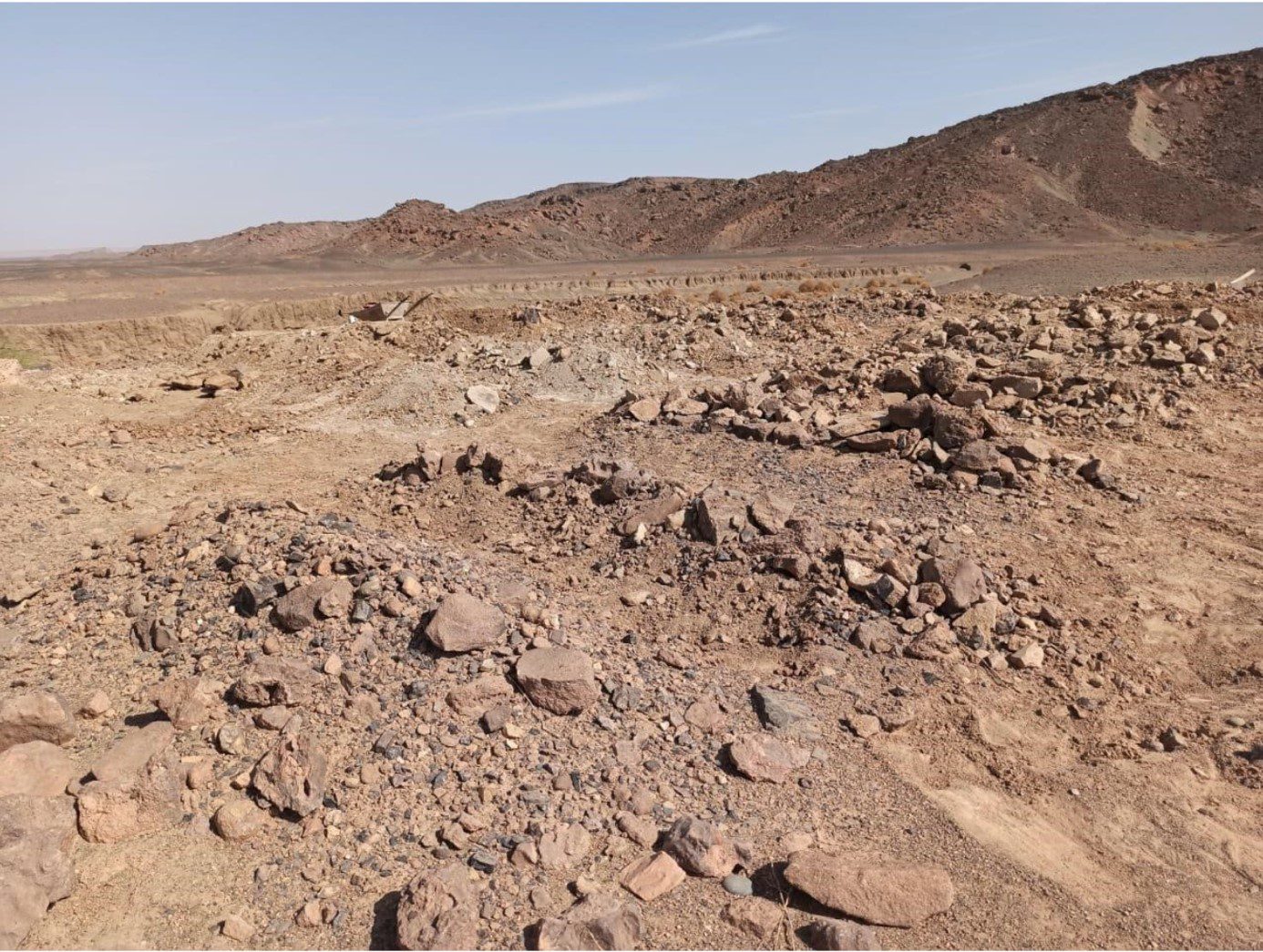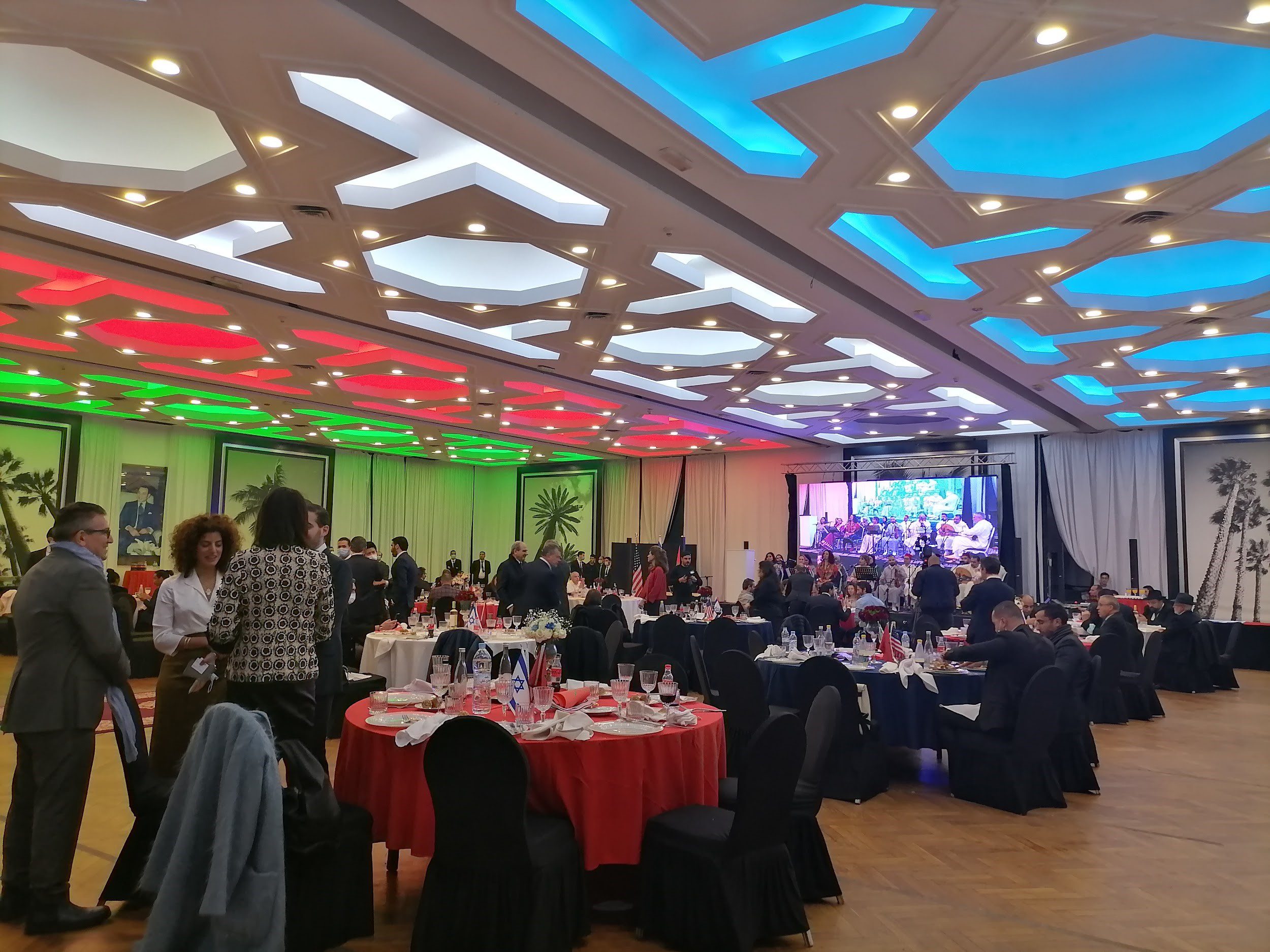By Amal Mansouri, HAF Field Coordinator, REMA

Pictures from different angles and neighborhoods of the old medina
Morocco is renowned for its hospitality, diversity and multiculturalism. Out of all the places where you can sense the existence of these concepts, we find them most easily in the facades, ancient corners and long past laid bricks of Morocco’s medinas. Medinas can be considered the ambassadors of diversity, inclusion and tradition throughout Morocco’s cities and regions. These ancient entities that hold the records of our past are now withstanding the adjustments of our present lifestyles, which is required in order for our medinas to survive the changing and evolving ways of the world. But when we say the old medinas, a lot of people, including me, often tend to think of Fez, Meknes, Tangier, Casablanca, Rabat, and Marrakech.
These cities are the most famous ones in Morocco, and thus a lot of attention is associated with them. But what we also need to remember is that besides these cities, many of which are small, there are other ambassadors of culture and tradition in other areas that hold a huge cultural significance and that have participated in cultivating the interculturalism and the coexistence in the hearts of Moroccans. The small city Sefrou is a living proof of that.
For those who don’t know much about the history and the cultural value of Sefrou, here is a small, yet very rich introduction given by the participants of the Of Multiple Shapes and Colors: Multiculturalism in the Region of Sefrou, What Potential Does It Have Today webinar held on November the 10, 2021, hosted by Dr. Sadik Rddad, President of the Sefrou Association of Multidisciplinary Arts (SAMA) and professor of English at Sidi Mohamed Ben Abdellah University in Fez. Guest lecturers included Dr. Mohammed Chtatou, a lecturer and political analyst at the International University of Rabat and Dr. Becky Schulthies, a linguistic and cultural anthropologist and an associate professor at Rutgers University, in the Department of Anthropology, School of Arts and Sciences.
When asked about Sefrou, Dr. Chtatou said: “If we consider the Atlas Mountains as the parent and Sefrou as the child, we can see on the map that Sefrou is sitting in the lap of its parent and by that, it’s receiving all the love from it. Translating that metaphor to reality, we should know that Sefrou used to be the center of economic and social exchange in the Atlas Mountains. This role was even boosted by having the weekly souk that was and is still being held on Thursdays. The souk is like a celebration.”
When asked what was so special about the old medina of Sefrou, Dr. Chtatou replied “whenever I enter the old medina, I feel like I’m being lifted to a Sufi dimension where you are enjoying yourself with a cup of tea in a coffee shop that is full of people who are socializing and sharing their stories. Nobody is a stranger in the old medina of Sefrou. Once you enter it, you automatically become Sefrioui.”

Images from the medina during the weekly Thursday souk in Sefrou. Photos: Amal Mansouri
While introducing Sefrou, Dr. Chtatou retold a couple of impactful stories that made him realize the cultural value of the city. The first story took us back to 1986 when he was in elementary school. “One day when we were in the elementary school, it was pouring, and the ceiling of the classroom was falling. The principal of the Jewish school that was next to us offered that we move our classes to the Jewish school. This was my chance to make a lot of Jewish friends.” His second story took place in 1986, when he was invited to the United States to give a speech at the University of Oklahoma. While there, and much to his surprise, he saw a big map of Morocco with Sefrou as the only location highlighted on the map. It was at that moment that he realized the importance of Sefrou.
Dr. Chtatou also recalled the story of a cave that existed near the city, that was called Kahf Lmoumen. He said “Back in the time, people said that a saint used to live there, and to honor his soul, both Jewish and Moroccans took turns celebrating his memory.” When I heard Dr. Chtatou’s stories, especially this last one, I was truly inspired. I was amazed at how people choose peace instead of dispute. They could have argued that the saint was a Muslim or Jewish. They could have said that only one of them could celebrate his memory, but instead they chose togetherness.
Dr. Becky Schulthies, who is not Moroccan, got the chance to discover the ambiance of the old medina of Sefrou and explore the community’s rituals and traditions. She and Dr. Chtatout consider Sefrou a model of tolerance. To her, Sefrou is very intellectually diverse and has a rich history. In Dr. Schulthies words, “Morocco in general, and Sefrou in particular, is living proof of how a minority with a different religion could live in peace and harmony in a society that has a dominance.” She mentioned the trait of mixed mkhlet, Tamaghrabit that Moroccans use as a synonym for the word multiculturalism. Dr. Schulthies was so impressed by Sefrou that she thinks there should be a Sefrioui stamp because the Sefrioui people represent a model of how different people live together in harmony.

Non-Sefrioui items existing in the Fondouqs of the old medina of Sefrou. Photos by Amal Mansouri
Recently, Sefrou’s heritage has experienced a sort of neglect, and the stories behind its variety and history are starting to fade. Therefore, the USAID Religious and Ethnic Minorities Activity (REMA), implemented by the High Atlas Foundation HAF and partners in Morocco is dedicated to helping preserve Moroccan historical legacies. With the immersion of such programs and projects, reviving the magic in the city of Sefrou is becoming just a question of time.
—
Amal Mansouri is a Field Coordinator for the USAID Religious and Ethnic Minorities Activity (REMA) and is currently based in Sefrou. Read more REMA updates and stories on HAF website, and browse REMA program photos on Flickr.
This article was completed with the support of the United States Agency for International Development (USAID), and the High Atlas Foundation is solely responsible for its content, which does not necessarily reflect the views of the USAID or the Government of the United States.
Arabic Version:
صفرو: مدينة متعددة الثقافات
بقلم أمل المنصوري، منسقة ميدانية لدى مؤسسة الأطلس الكبير/ برنامج ذاكرة

صور لمختلف زوايا وأحياء المدينة العتيقة
يُعرف المغرب بكرم الضيافة والتنوع والتعددية الثقافية. وتعد واجهات المدن المغربية العتيقة وزواياها القديمة والطوب الذي استخدم في الماضي لتشييدها من بين الأماكن حيث تتجلى هذه المفاهيم بوضوح. يمكن اعتبار المدن العتيقة سفراء التنوع والشمول والتقاليد في مختلف المدن والمناطق المغربية. هذه البنايات القديمة التي تشهد على تاريخنا العريق، تقف اليوم صامدة أمام التعديلات التي تعرفها أنماط حياتنا الحالية، وهو أمر ضروري لتنجو من التغيرات والتطورات التي يشهدها عالمنا. ولكن عندما نتحدث عن المدن العتيقة، فإن الكثير من الناس، بمن فيهم أنا، غالبا ما يميلون إلى التفكير في فاس ومكناس وطنجة والدار البيضاء والرباط ومراكش. إذ تعتبر هذه الأخيرة الأكثر شهرة في المغرب، وبالتالي فهي تحظى باهتمام كبير. لكن علينا أن نتذكر بأنه بالإضافة إلى هذه المدن، أغلبها صغيرة، هناك سفراء آخرون للثقافة والتقاليد في مناطق أخرى، حيث تتسم هي كذلك بأهمية ثقافية كبيرة كما شاركت في غرس مبادئ التعددية الثقافية والتعايش في قلوب المغاربة. مدينة صفرو الصغيرة هي مثال حي يشهد على ذلك.
بالنسبة للأشخاص الذين لا يعرفون إلا القليل عن تاريخ مدينة صفرو وقيمتها الثقافية، إليكم نبذة مختصرة ولكنها غنية بالمعلومات عن المدينة قدمها المشاركون في الندوة الافتراضية التي انعقدت في 10 نوفمبر 2021 تحت عنوان “مدينة متعددة الأشكال والألوان المتعددة: آفاق التعددية الثقافية في جهة صفرو اليوم”. وقد أشرف على تسيير الندوة الدكتور صادق رداد، رئيس جمعية صفرو للفنون متعددة المناهل (SAMA) وأستاذ اللغة الإنجليزية بجامعة سيدي محمد بن عبد الله بفاس، بمشاركة عدد من الضيوف المحاضرين بمن فيهم الدكتور محمد شتاتو، المحاضر والمحلل السياسي بالجامعة الدولية بالرباط، والدكتورة بيكي شولثيس، عالمة الأنثروبولوجيا اللغوية والثقافية وأستاذة مشاركة بجامعة روتجرز بقسم الأنثروبولوجيا، كلية الآداب والعلوم.
عندما سئل الدكتور شتاتو عن مدينة صفرو، رد قائلا: “إذا اعتبرنا جبال الأطلس الأب وصفرو الطفل، يمكننا أن نرى على الخريطة أن صفرو تجلس في حضن والدها، وبذلك، فإنها تتلقى كل الحب منه. والواقع أن مدينة صفرو كانت مركزا للتبادل الاقتصادي والاجتماعي في جبال الأطلس بحيث تعزز هذا الدور بفضل السوق الأسبوعي الذي كان ولا يزال يقام أيام الخميس. ويُنظر إلى السوق الأسبوعي على أنه احتفال”.
طُرح سؤال آخر على الدكتور شتاتو حول مميزات المدينة العتيقة بصفرو، فأجاب: “كلما دخلت المدينة العتيقة، أشعر وكأنني أنغمس في إحدى درجات التصوف حيث تستمتع بفنجان من الشاي في مقهى مملوء بالأشخاص الذين يجتمعون ويشاركون قصصهم. لا أحد يشعر بالغربة بالمدينة العتيقة بصفرو، فبمجرد أن تلجها ، تصبح صفريويا”.

صور من المدينة العتيقة خلال سوق الخميس الأسبوعي بمدينة صفرو. صور بعدسة: أمل المنصوري
أثناء تقديمه مدينة صفرو، أعاد الدكتور شتاتو سرد قصتين مؤثرتين ساهمتا في إدراكه القيمة الثقافية للمدينة. أعادتنا القصة الأولى إلى سنة 1986 عندما كان في المدرسة الابتدائية. “في أحد الأيام عندما كنا في المدرسة الابتدائية ، كانت الأمطار تهطل بغزارة، وكان سقف الفصل الدراسي يتلاشى. عرض مدير المدرسة اليهودية التي كانت بجوارنا أن ننقل حصصنا الدراسية إلى المدرسة اليهودية، فأتيحت لي فرصة التعرف على العديد من الأصدقاء اليهود”. وجرت أحداث قصته الثانية سنة 1986، عندما تلقى دعوة لإلقاء خطاب في جامعة أوكلاهوما بالولايات المتحدة. وخلال تواجده هناك، أثارت دهشته رؤية خريطة كبيرة للمغرب حيث كانت مدينة صفرو الموقع الوحيد الذي تم تسليط الضوء عليه على الخريطة. في تلك اللحظة أدرك قيمة مدينة صفرو.
استحضر كذلك الدكتور شتاتو قصة كهف كان يوجد بالقرب من المدينة يسمى بكهف لمومن، وقال: “كان الناس آنذاك يقولون أن وليا صالحا كان يعيش هناك، فتناوب اليهود والمغاربة على الاحتفال بذكراه تكريما لروحه”. عندما استمعت لقصص الدكتور شتاتو، خاصة هذه القصة الأخيرة ، شعرت بالإلهام حقا. أدهشتني فكرة أن هؤلاء الأشخاص فضلوا السلام عن النزاع، فقد كان بإمكانهم أن يدخلو في جدال حول ما إذا كان الولي مسلما أو يهوديا أو كان بإمكانهم الجزم بأن واحدا منهم فقط يمكنه الاحتفال بذكرى الولي، لكنهم عوض ذلك اختاروا التوحد والاحتفال معا.
حظيت الدكتورة بيكي شولثيس بفرصة اكتشاف أجواء المدينة العتيقة بصفرو والتعرف على طقوس وتقاليد المجتمع المحلي. وتعتبر هي والدكتور شتاتوت مدينة صفرو نموذجا للتسامح. بالنسبة لها، تمتاز مدينة صفرو بتنوع فكري وتاريخ غني. وعلى حد تعبير الدكتورة شولثيس، فإن “المغرب بشكل عام، وصفرو بشكل خاص، مثال حي على كيف يمكن لأقلية دينية أن تعيش في سلام ووئام وسط مجتمع مهيمن”. وأشارت إلى سمة الاختلاط وتمغربيت التي يستخدمها المغاربة كمرادف لمصطلح التعددية الثقافية. وقد أعجبت الدكتورة شولثيس بمدينة صفرو لدرجة أنها تعتقد أنه يجب أن يكون هناك طابع صفراوي لأن الشعب الصفريوي يمثل نموذجا للتعايش والوئام بين مختلف الأشخاص.

قطع تراثية غير صفريوية متواجدة بفنادق المدينة العتيقة بمدينة صفرو. صور بعدسة: أمل المنصوري
لقد شهد تراث مدينة صفرو في الآونة الأخيرة نوعا من الإهمال، وبدأت القصص الكامنة وراء تنوعه وتاريخه تتلاشى. لذلك، يساهم برنامج ذاكرة الذي أطلقته الوكالة الأمريكية للتنمية الدولية، والذي تنفذه مؤسسة الأطلس الكبير (HAF) وشركاؤها في المغرب، في الحفاظ على الموروثات التاريخية المغربية. وبفضل مثل هذه البرامج والمشاريع، أصبح إعادة إحياء سحر مدينة صفرو مجرد مسألة وقت.
—
أمل المنصوري هي منسقة ميدانية لبرنامج ذاكرة الذي أطلقته الوكالة الأمريكية للتنمية الدولية وتشتغل حاليا بمدينة صفرو. اقرأ المزيد عن آخر مستجدات وقصص برنامج ذاكرة على موقع مؤسسة الأطلس الكبير أو تصفح صور البرنامج على Flickr.
(USAID)تم إنجاز هذا المقال بدعم من برنامج ذاكرة الذي أطلقته الوكالة الأمريكية للتنمية الدولية
. تعتبر مؤسسة الأطلس الكبير المسؤولة الوحيدة عن محتواه والذي لا يعكس بالضرورة وجهات نظر الوكالة الأمريكية للتنمية الدولية أو حكومة الولايات المتحدة.







